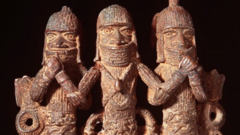Despite a surge in cycling fatalities in the Netherlands, many cyclists resist wearing helmets, prioritizing cultural identity over safety recommendations.
The Helmet Debate: A Cultural Standoff in Dutch Cycling Safety

The Helmet Debate: A Cultural Standoff in Dutch Cycling Safety
While cycling is deeply embedded in Dutch culture, rising fatalities among cyclists ignite discussions on whether helmet use should be normalized.
In the Netherlands, cycling is not just a mode of transport; it's a way of life. Yet, as road fatalities among cyclists continue to rise—246 deaths were reported last year, compared to 220 for car occupants—the conversation around cycling safety is intensifying. Recent data from the Dutch Central Bureau for Statistics highlights the stark reality: cyclists constitute the most vulnerable road users, with a significant chunk of fatalities resulting from head injuries.
Fallon Albrecht, a 39-year-old cyclist navigating Amsterdam's bustling streets during peak hours, exemplifies a common mindset. "It's every person for themselves," she quipped while weaving through a chaotic intersection. Albrecht, along with many others, chooses to ride without a helmet, citing personal preferences, such as hairstyle, over safety gear. This sentiment reflects a broader cultural stance in the Netherlands, where there are more bicycles than inhabitants, yet helmet usage remains low.
The government has launched an awareness campaign to change this perspective, aiming to promote helmet-wearing as a critical safety measure. However, many cyclists remain skeptical, viewing helmets as an intrusion on their cycling freedom and identity. The dilemma pits traffic safety against the distinct cultural fabric that firmly prioritizes cycling as an innate right rather than a regulated activity.
As authorities grapple with this paradox, the question arises: how to encourage safer riding practices while respecting the deeply ingrained cycling ethos of the Dutch populace? With road safety statistics on the rise, the challenge remains to balance cultural pride in cycling with necessary protective measures.





















